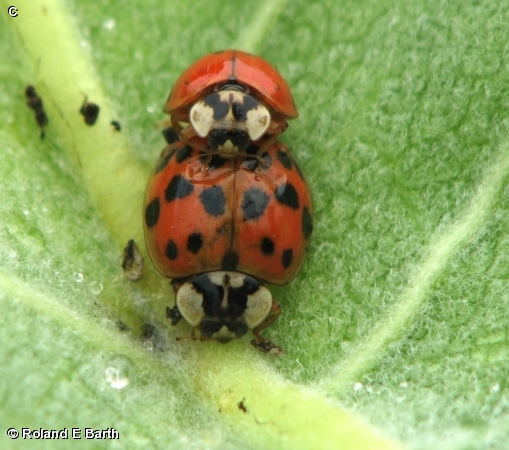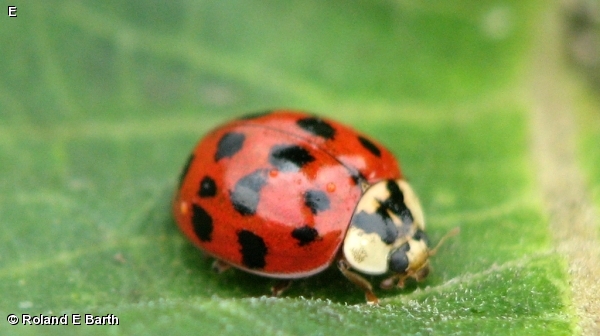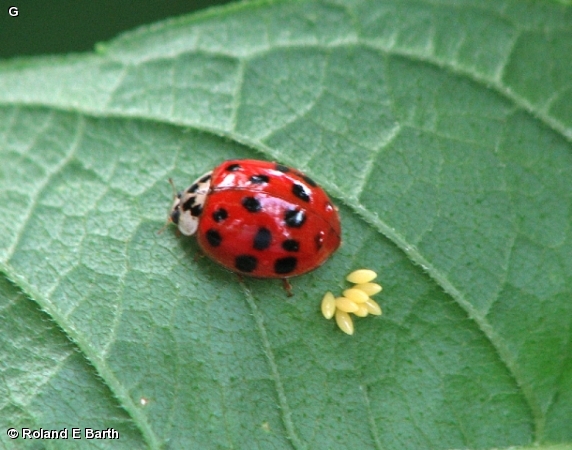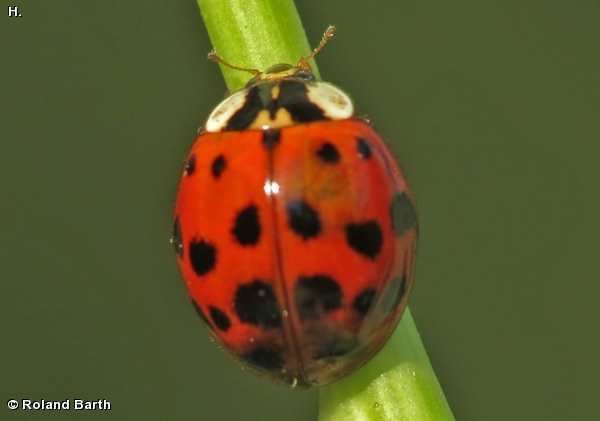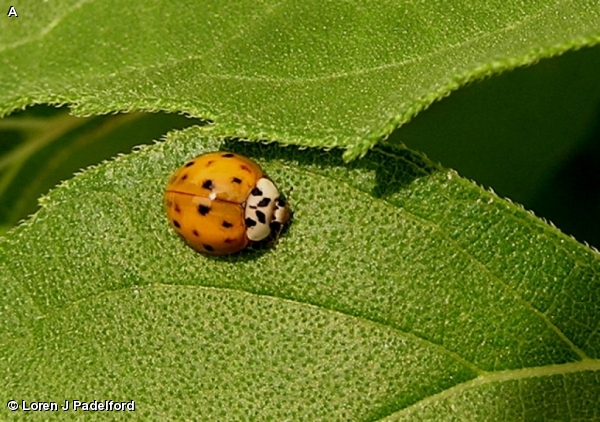
This beetle has a wider range of colors and spots than other lady beetle species (See photos A-E). The wings range from black to mustard in color and the spots number from none to many. The most common U.S. form is mustard to red with 16 or more black spots. These beetles are slightly larger than native lady beetles, with adults measuring 9/32 inch long and 7/32 inch wide. They are oval or convex in shape, and yellow to red in color (with or without black spots on the wing covers). The head is usually concealed beneath the disk-shaped pronotum, which is cream to yellow in color with a black ‘M’ design in the center. Asian lady beetle larvae are elongated, flattened, and covered with minute tubercles or spines (F). The eggs, which are laid upright in clusters of about twenty, are oval and yellow.
This beetle is native to Asia but also occurs in many areas of the United States. Today it is abundant north to Quebec and west to Texas and Missouri with scattered occurrences elsewhere. It is a tree dwelling aphid predator. Its occurrence in Fontenelle Forest is unknown.
This beneficial insect was imported and released as early as 1916 in attempts to naturally control certain insect pests. But the first populations were not found in this country until 1988 in Louisiana near New Orleans. This insect is similar to other familiar lady beetles commonly found throughout the United States. Like the familiar lady beetles, the multicolored Asian lady beetle feeds on insect pests in orchards and forests but may also occur on row crops and in gardens. They become a nuisance when they invade homes from September through April. In agricultural systems this species may be displacing native lady beetles. They hibernate in large groups frequently selecting manmade structures in which to cluster. This may result in a permeating odor and these beetles will bite on occasion.
Disclaimer: The content of NatureSearch is provided by dedicated volunteer Naturalists of Fontenelle Forest who strive to provide the most accurate information available. Contributors of the images retain their copyrights. The point of contact for this page is: Eric Scholar.


